If you spend time on LinkedIn, you may have noticed that the platform’s on a drive to make the site more engaging for both individual users and brands.
LinkedIn has made some interesting changes to its company pages, such as introducing Articles and Live Events. You’re now able to publish long-form content (similar to PULSE articles), on your company page. It’s introduced new ways to measure the impact of employee advocacy on content engagement and reach. If that isn’t enough, it’s also added a Community tab to brand pages to let coworkers share content easily.
With these changes, it makes it so much easier for your brand to discover and engage with employee content. To add to the intel, you’ll also see the impact of different kinds of content, to see what’s working (which helps with creating an effective content strategy) and help your brand grow its audience.
LinkedIn has also clamped down on people gaming the system to boost engagement numbers (posting multiple times a day with polls, for example). It has deprioritised some types of content (like slide decks and videos), prioritising conversations instead. As a result, members are reengaging with the platform – conversations between LinkedIn connections increased by 55% in 2020.
If you’ve put LinkedIn on the back burner in recent years, it could be time to reevaluate what it can do for your brand.
How to get engagement on LinkedIn
Here are my tips for improving your brand’s engagement on LinkedIn.
- Focus on the human element
LinkedIn is powered by people. Thirty percent of company page engagement comes from employees, who are also 14 times more likely to share their employer’s company page content than other types of content. This should be organic, not forced – so focus on creating the kind of content that employees want to share.
- Understand the algorithm
Like all social media platforms and apps, LinkedIn wants to keep people on the site. The algorithm prefers it when you don’t link away from the site. Try to create more content specifically for LinkedIn rather than using it to promote content you’ve posted elsewhere.
As with other networks, LinkedIn is trying to promote high-quality content that people want to engage with. Experiment with the right format, content and time of posting. If the post gets a good amount of engagement soon after you publish it, the algorithm gives it a bit of a boost, and it’s more likely to continue appearing in people’s feeds. If a post gets a lot of engagement, LinkedIn editors will look at it and assess whether it should continue to feature in people’s feeds (or even promote it as a LinkedIn editors’ pick).
The algorithm prioritises content shared by individuals over companies. So a post will do better when it’s shared by employees.
It favours frequent high-quality content (including posting over the weekend) but doesn’t like it when people or Pages post content at the same time every day. Ideally, your brand should be posting to LinkedIn in a similar way to an individual (when you have something to share/say) rather than scheduling content in an attempt to feed the algorithm).
- Have a purpose and know your audience
Shareable content on LinkedIn is:
- Purposeful – there’s real meaning behind it. Something that people can be passionate about or have an opinion on
- Emotive, personal or story-driven – it needs to provoke a reaction, especially as many people still use LinkedIn passively (between one and two percent of people post, the rest ‘lurk’)
- Something that inspires pride – don’t we all want to be proud of the company we work at? It’s much easier for people to share branded content when it reflects well on them
It’s also a great idea to reciprocate. Use the Employee Posts tab to keep up to date with what employees post on LinkedIn and like, share or comment on posts now and again. Engagement is a two-way process now. Use your Page as you would your personal LinkedIn page – that’s to say, share posts, reply, like etc.
Would your brand benefit from using it more?
LinkedIn is a place where B2B and B2C marketing can have some cross-over as it’s driven by recruitment, personal development and networking. We might be on LinkedIn for professional networking, but the content brands post on there could also influence our purchasing decisions as consumers.
But if you decide to be on LinkedIn, treat it as you would any other network: analyse your audience; create unique content with purpose; and constantly evaluate your programme.
It could deliver more than you think.






Leave a Reply